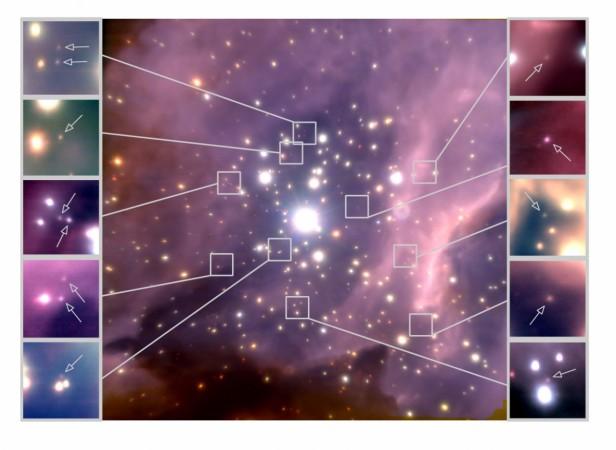
Astronomers have lately found that our galaxy could have 100 billion brown dwarfs or more. This was revealed during the analysis of dense star clusters.
The research was led by Koraljka Muzic from Portugal's University of Lisbon along with Aleks Scholz from Scotland's University of St. Andrews and other collaborators. The researchers presented their findings on July 6 at the National Astronomy Meeting in Hull, England.
"We've found a lot of brown dwarfs in these clusters. And whatever the cluster type, the brown dwarfs are really common," Scholz said in a statement.
"Brown dwarfs form alongside stars in clusters, so our work suggests there are a huge number of brown dwarfs out there," Scholz added.
According to the guesstimation of the researchers, around 25 billion to 100 billion brown dwarfs are present in the Milky Way. They also speculated that there are chances of having more of these substars in the small and faint galaxies which are difficult to detect using the telescopes that are presently used by the astronomers.
The brown dwarfs discovered so far were comparatively close to the Sun the overwhelming majority within 1500 light years, simply because these objects are faint and therefore difficult to observe. Most of those brown dwarfs detected are located in nearby star-forming regions, which are all fairly small and have a low density of stars.
This search for brown dwarfs was initiated by the astronomers in 2006 and they analysed five nearby star forming regions. This was known as the Substellar Objects in Nearby Young Clusters (SONYC) survey in which NGC 1333 star cluster was examined too. This star cluster is located 1000 light years away in the constellation of Perseus. This star cluster was found to comprise of half as many brown dwarfs as stars, which was a higher proportion than previously observed.
Another distant star cluster was studied by the researchers in 2016 to find out if NGC 1333 was an unusual cluster. They observed that the RCW 38 star cluster which is present in the constellation of Vela, at a distance of 5500 light years away. This point towards the fact that it consists of brown dwarfs which are faint and difficult to spot when present beside brighter stars. The RCW 38 star cluster had a high density of more massive stars and comprised of very different conditions in contrast to other clusters.
The researchers used the NACO adaptive optics camera on the European Southern Observatory's Very Large Telescope for observing the cluster for a span of 3 hours in order to get a clearer image and comparing it with the previous work.
The scientists found that RCW 38 too had half as many brown dwarfs as stars. This finding led to the conclusion that the environment where the stars form, whether stars are more or less massive, tightly packed or less crowded, had a minor impact on how brown dwarfs form.

Here are seven things you need to know about the brown dwarf stars:
- Brown dwarf is also called substellar object or substar which possess a mass which range between the heaviest gas giant planets and the lightest stars.
- These are basically failed stars, which are not massive enough allow the nuclear of ordinary hydrogen to helium in their cores but rather guessed to have nuclear fusion reactions.
- They are designated as types M, L, T and Y. They are also of various colors and could appear magenta, orange or red.
- Though they are called "brown" dwarfs, they can be of different colours; they can appear orange, red or even magenta to human eyes.
- These failed stars don't appear to be very radiant at visible wavelengths.
- The closest brown dwarf is Luhman 16, which is located at a distance of 6.5 light years. It was discovered in the year 2013 and is a binary system of brown dwarfs.
- Shiv S Kumar was the one to theorise about the brown dwarfs in 1960s and these were called "black dwarfs" originally. A black dwarf is a theoretical stellar remnant, specifically a white dwarf that has cooled sufficiently that it no longer emits significant heat or light.

















